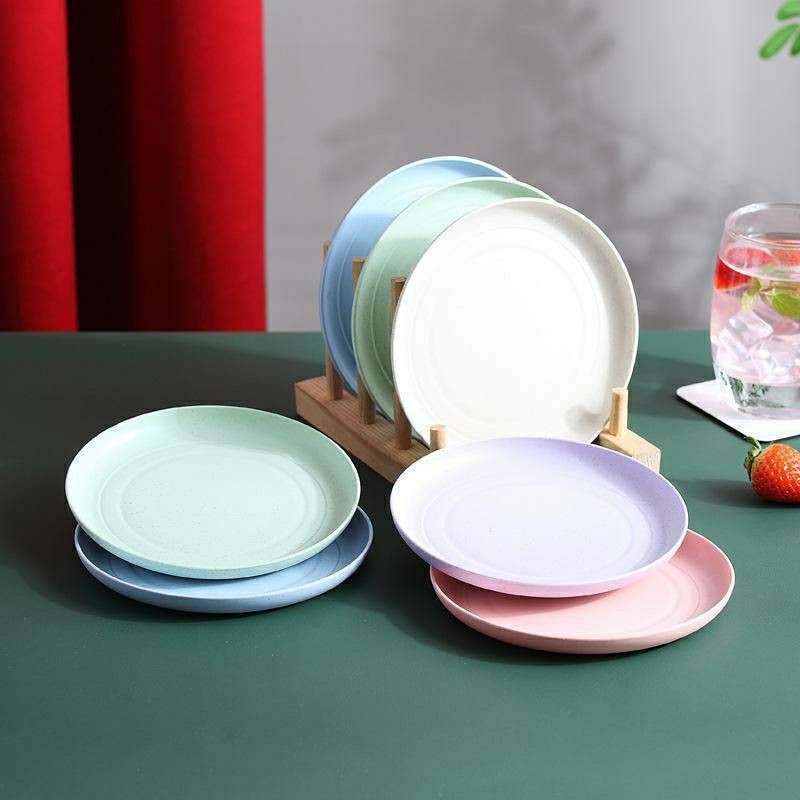
Disposable plastic plates represent one of the most common household items used across gatherings large and small, from festive celebrations to everyday meals when convenience takes priority. These lightweight, affordable products have transformed how we approach entertaining and quick meals, offering a practical solution for many situations. At the same time, they’ve sparked important conversations about sustainability, environmental impact, and our relationship with single-use items.
The Convenience Factor
For many households and businesses, disposable tableware offers undeniable practical benefits:
- Time efficiency—no washing up required after meals
- Hygiene considerations—particularly valued in public settings
- Lightweight nature—making them ideal for picnics and outdoor events
- Cost-effectiveness, especially for large gatherings
A 2023 consumer survey found that 68% of respondents cited time-saving as their primary reason for choosing disposable options, while 42% mentioned hygiene concerns. These practical considerations explain why the global market for disposable tableware continues to grow steadily at approximately 5.8% annually.
For working parents juggling multiple responsibilities, disposable plates can make hosting gatherings more manageable. Hospital and healthcare settings rely on disposables for infection control, while disaster response teams depend on them during emergencies when washing facilities are compromised.
Material Considerations
Most disposable plates are manufactured using various plastic polymers, each with different properties:
- Polystyrene—lightweight and insulating
- Polypropylene—more heat-resistant and durable
- PET (polyethene terephthalate)—clear and moderately heat-resistant
These materials offer specific performance benefits but also present certain challenges regarding waste management. According to manufacturing specifications, standard disposable plates are designed to be used once, though their molecular structure remains intact for much longer periods.
“Malaysia generates approximately 0.94 million tonnes of plastic waste annually, with single-use items comprising a significant portion of this total,” reports the Malaysian Plastics Manufacturers Association.
The Malaysian Perspective
In Malaysia, disposable plastic plates serve important functions within specific cultural and economic contexts. The country’s vibrant street food culture, tropical climate, and tourism industry all influence how these products are used and perceived.
Some restaurants and food vendors rely on disposables for practical reasons, while others are exploring alternatives. Malaysian consumers demonstrate varied attitudes toward plastic disposables, with different priorities shaping their choices.
The government has developed a phased approach to managing plastic waste, introducing the Malaysia Roadmap Towards Zero Single-Use Plastics 2018-2030. This framework acknowledges both the environmental concerns and the practical realities of businesses and consumers.
The Malaysian experience illustrates the complex interplay of traditional practices and modern convenience. The country’s famous pasar malam (night markets) have historically used banana leaves as natural disposable plates—a practice that continues in some regions but has largely given way to plastic alternatives in urban centres.
Various Malaysian enterprises are developing alternative materials, including:
- Plates made from agricultural by-products like palm fronds
- Biodegradable options using cassava starch
- Reusable systems with collection and sanitising services
Multiple Viewpoints
The conversation around disposable plates involves diverse perspectives:
· Environmental advocates raise concerns about plastic pollution
Approximately 8 million tonnes of plastic enter the oceans globally each year, highlighting the urgent need to address marine pollution. Advocates argue that current waste management systems are ill-equipped to handle the scale of plastic waste being generated.
· Industry representatives point to material innovations and efficiency
In response to environmental concerns, many manufacturers have improved production processes and developed more recyclable materials. Some companies have successfully reduced plastic content in their products by up to 25% while maintaining their functionality and durability.
· Consumer groups highlight the role of personal choice and necessity
Not all disposable plastics are wasteful—consumer advocates stress that such items play vital roles in specific contexts. In healthcare settings, during emergency responses, and for individuals with certain disabilities, disposable options can be essential and even life-saving.
· Policy experts call for balanced, gradual transitions
Experts in environmental policy recommend a pragmatic approach that balances innovation with infrastructure. Strengthening waste management systems and encouraging a gradual shift to alternative materials can ensure sustainable progress without disrupting essential services or industries.
Practical Considerations
For households considering their approach to tableware, several factors might influence decision-making:
- Frequency of use—occasional versus regular needs
- Storage capacity for reusable alternatives
- Available washing facilities
- Local waste management systems
- Budget constraints
- Specific event requirements
Many households find that a mixed approach works best—using durable tableware for everyday situations while keeping disposables on hand for specific circumstances.
Looking Forward
The conversation around disposable plates continues to evolve as technology advances and consumer preferences shift. Researchers are developing new materials that offer comparable convenience with reduced environmental impact, while waste management systems are adapting to better handle different types of disposables.
Materials science innovations present intriguing possibilities. Researchers at Malaysian universities are exploring prototypes using agricultural waste fibres that decompose within weeks while maintaining structural integrity during use. Meanwhile, manufacturers are investing in bioplastic formulations that promise the convenience of traditional plastics with improved environmental profiles.
The economic considerations remain significant. Traditional plastic plates cost less than biodegradable alternatives, though this price gap may narrow as production scales up. Some industry analysts predict improved affordability for certain alternatives by 2028.
For businesses and consumers alike, staying informed about options helps support thoughtful choices that balance immediate needs with broader considerations. This might mean selecting biodegradable alternatives for certain occasions, evaluating the lifecycle impacts of different products, or reimagining systems altogether.
Understanding the complete picture—from manufacturing and distribution to use and disposal—provides context for evaluating the role of disposable plastic plates in our homes, businesses, and communities. As materials science advances and consumer preferences evolve, we may soon find new alternatives that address the practical needs currently met by plastic use and throw plates.
